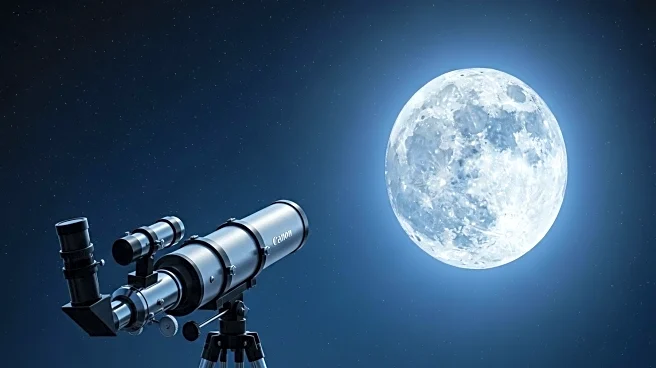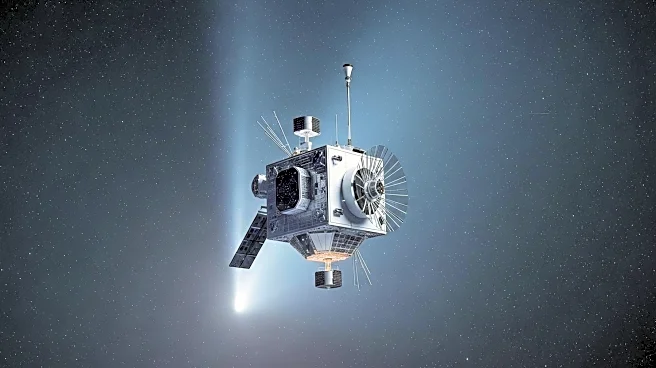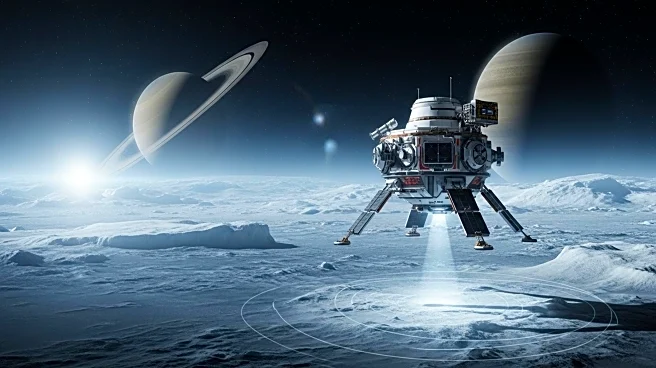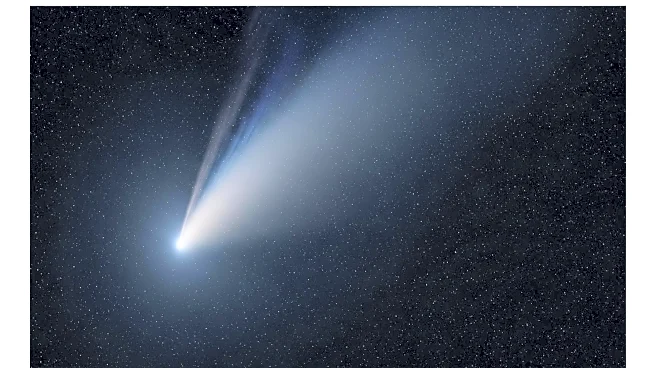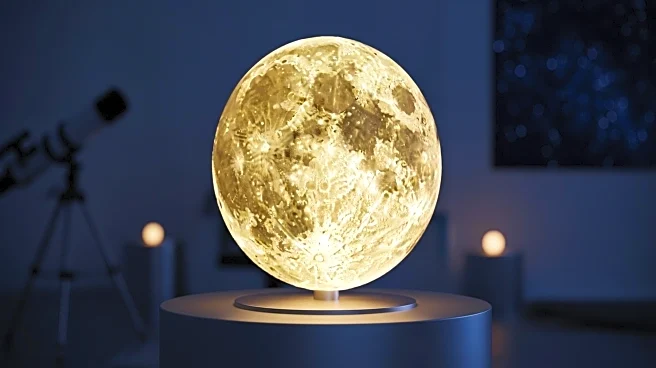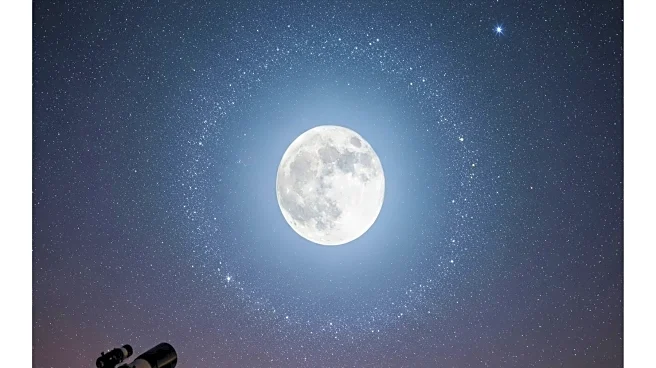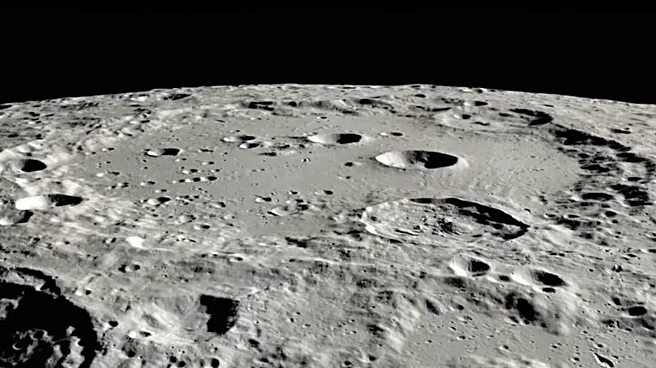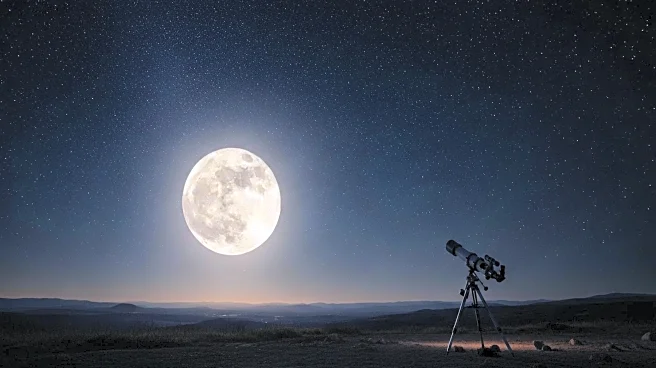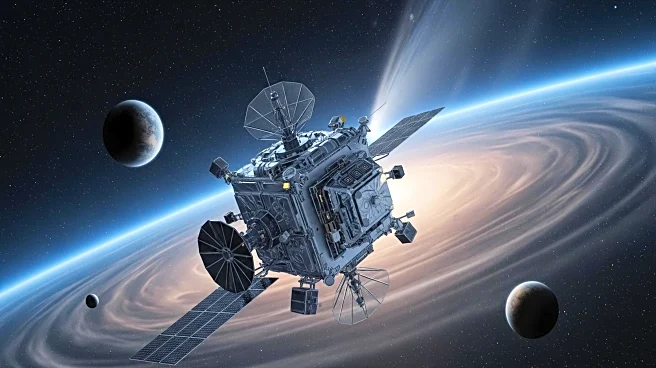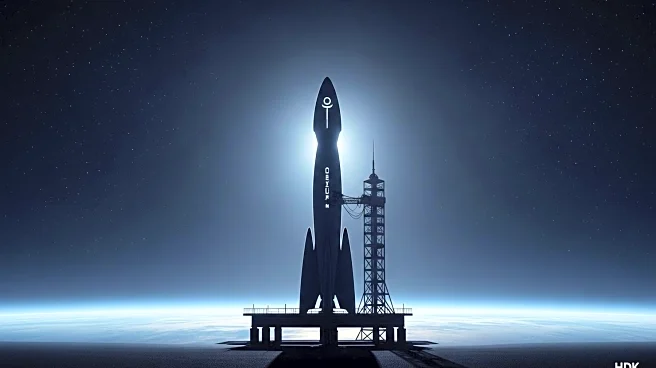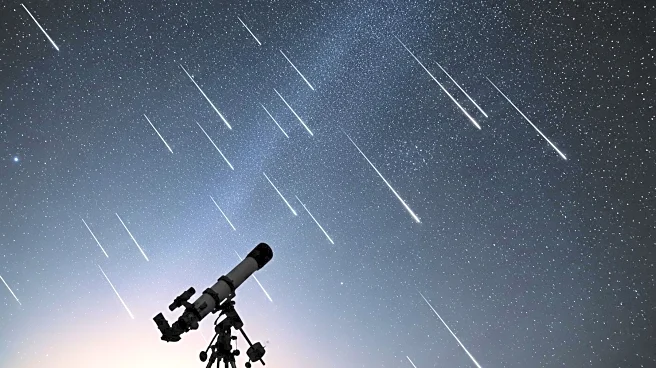What is the story about?
What's Happening?
NASA, in collaboration with international partners, is hosting the International Observe the Moon Night 2025 on October 4. This annual event aims to engage the public in observing the moon and learning about humanity's efforts to explore Earth's natural satellite. The event features over 950 virtual and in-person activities worldwide, encouraging participants to observe the moon through telescopes, binoculars, or with the naked eye. Key lunar features to observe include the terminator, Mare Nubium, Montes Jura, and ejecta rays. The terminator, the line separating night from day on the moon, will be visible on the left side of the 95%-lit lunar disk. Mare Nubium, a basalt plain, and Montes Jura, a mountainous range, are also highlighted. Ejecta rays, bright streaks from craters, will be particularly visible around the full moon phase.
Why It's Important?
The International Observe the Moon Night 2025 serves as an educational platform, fostering public interest in space exploration and lunar science. By engaging a global audience, NASA and its partners aim to inspire future generations of scientists and engineers. The event also highlights the importance of international collaboration in space exploration, as it brings together participants from various countries to share knowledge and experiences. This initiative supports NASA's broader goals of promoting space science and exploration, potentially influencing public policy and funding for future lunar missions. The event's success could lead to increased public support for space programs and inspire new technological advancements.
What's Next?
Following the International Observe the Moon Night 2025, NASA and its partners may analyze the event's impact on public engagement and interest in lunar exploration. The data collected could inform future outreach strategies and educational programs. Additionally, the event may lead to increased collaboration between international space agencies, fostering joint missions and research initiatives. As public interest grows, there may be a push for more frequent and diverse space-related events, further integrating space science into educational curricula and public discourse.
Beyond the Headlines
The event underscores the cultural and scientific significance of the moon, which has been a source of inspiration and study for centuries. By promoting lunar observation, NASA and its partners are not only advancing scientific knowledge but also preserving the cultural heritage associated with the moon. The initiative may also encourage ethical discussions about space exploration, such as the preservation of lunar environments and the responsible use of space resources. As humanity continues to explore the moon, these discussions will become increasingly relevant, shaping the future of space policy and exploration.
AI Generated Content
Do you find this article useful?
